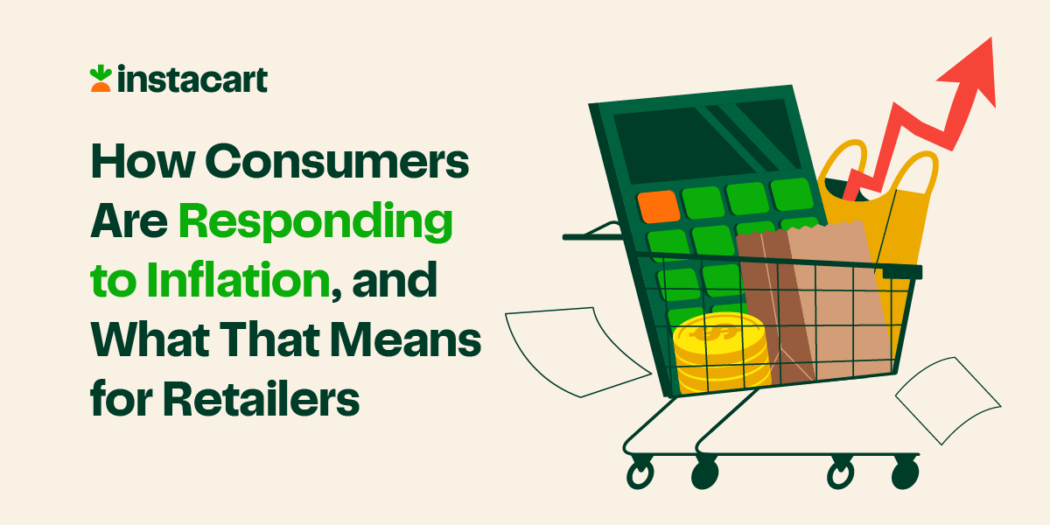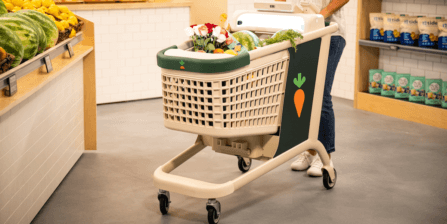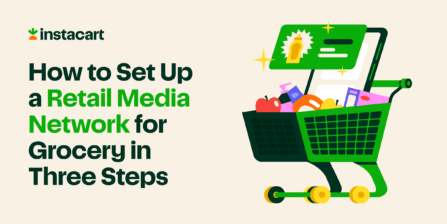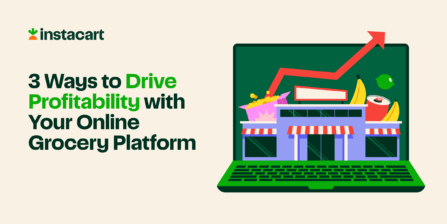Instacart Retail
How Consumers Are Responding to Inflation, and What That Means for Retailers

While inflation continues to affect the retail industry across the board, it continues to be felt most by the stakeholders who could potentially have the largest influence: the consumers. To combat this issue, retailers must be able to react with agility to deliver on the increasing affordability needs of customers in 2023 and beyond.
Understanding the impact for consumers
Prices have jumped across all industries — the US Bureau of Labor Statistics reported a 6.5% increase across all consumer prices over 2022, with a particularly staggering 11.8% increase in the cost of “food at home.” Naturally, high prices lead to more budget-conscious consumers who begin to cut costs wherever possible. However, what exactly that looks like can vary greatly depending on the person or family. The word “affordable” carries very different meanings across different households, as does the value of convenience.
Regardless, there are a handful of broad trends that reflect consistent behaviors among all consumers. Now lets dig in…
As consumers seek to stretch their dollars, we see a shift from dining out and ordering from restaurants to the more cost-friendly trend of cooking their own meals at home. This shift presents an opportunity for the retailers who provide fresh groceries or prepared meals to differentiate themselves, serve customers and capture more revenue. So far, grocery delivery has remained more resilient to inflation impacts than restaurant delivery.*
Of course, while this certainly puts grocery delivery in a more stable position than restaurant delivery, it doesn’t mean that consumers are setting their budgetary concerns aside when grocery shopping. To stay resilient, retailers must keep certain things in mind:
- The need to understand the shifts in consumer behavior. How and why are consumers changing their shopping habits? A retailer who wants to stay on top must remain informed to put the right strategies and processes in place.
- The ability to deliver on value efficiently and effectively. Consumers will be paying extra attention to prices and respond positively to retailers that demonstrate a commitment to affordability.
- The importance of delivering a strong customer experience. Regardless of economic trends, consumers expect a smooth and engaging shopping experience. With value top of mind, whether it be regarding your website, pickup structure, or delivery services, people want to ensure they’re getting the quality services they’re paying for.
How are consumers reacting? Here are four core trends retailers should know:
The consumer response to high prices might not be as obvious as it seems. While Instacart App and white-label data suggests consumers are maintaining online purchase behavior, spending habits within those orders are shifting to prioritize affordability. Here are the four trends we’re noticing:
1. Spending the same amount, but purchasing fewer items
While price per item has risen, monthly spend has remained fairly stable. Instead of spending the extra money to maintain their usual-sized order, or trying to cut down their overall spending, consumers are instead purchasing fewer items overall.
2. Sizing up for value in some categories
Despite rising costs, consumers aren’t shying away from big boxes. Instead, they’re stocking and bulking up on products they use often in order to save long-term. Purchases of small quantities and single packages have dropped off considerably for many products.
3. Sticking with their favorite brands
Brand loyalty has traditionally been seen as a strong guiding factor in purchasing decisions, but as prices rise, adoption of private labels has increased for certain categories. Compared to a year ago, we see increased adoption of private-label brands for baby care and household care, but brands are proving resilient in the most recent recessionary quarter.
When looking at larger category dynamics, private label eggs have seen the largest share growth versus a year prior in response to a nearly 56.8% price increase, as indicated by the US Bureau of Labor Statistics’ consumer price index for eggs within the same time frame.
4. Seeking out more deals
Consumers aren’t simply waiting for more affordable options to present themselves. On the contrary, they are being proactive in finding deals, discounts and coupons, and it is the number one reason a consumer visits a retailer’s website.
While deal-seeking behavior on the Instacart App has remained relatively stable, we anticipate it to increase in importance. In a recent survey of 1,700 consumers, 6 of the top 10 preferred features for Instacart+ members are linked to direct savings.
What do these behaviors mean for retailers?
In today’s economy, consumers are seeking a shopping experience that supports their quest for affordability. Focusing on the below key areas can help retailers do so in an efficient and effective way.
- Operational efficiencies: Inventory management is key. Having an online presence and working with a capable tech platform enables real-time data that can inform proactive or real-time stock replenishment. With rising prices and fewer items per order, every purchase counts. Up-to-date stocking information for core SKUs means a smoother experience for your consumers.
- Affordability delivered across all channels: All too often, coupons may be communicated in the circular or on the shelf, but how can those same consumers find those promotions wherever they shop? During recessionary times, retailers should double down on their pricing and promotion strategies and invest in the most impactful acquisition and retention incentives for their customers while simultaneously expanding loyalty programs.
- Smooth and accessible cross-channel experiences: In-store, delivery, and pick-up models have not only proven how resilient they are to inflation challenges but how vital they are to providing access to groceries for all consumers, regardless of how they prioritize convenience and affordability.
Consumers are always looking for more affordable options, positive shopping experiences, and clear communication across all channels. Hard economic times don’t drastically change these priorities — they emphasize them.
At Instacart, we bring insights to retailers so they can stay informed on consumer trends, and the technology needed to enable retailers to remain agile to efficiently deliver on these trends.
See how Instacart is empowering grocers to make online grocery more affordable for customers.
*Online Grocery includes both 1st party and 3rd party grocery delivery and pickup sales. Online restaurant data source from US Bureau of Labor Statistics.
Most Recent in Instacart Retail

Caper
Why Smart Carts Are the Winning Technology Format for Grocers
One of the most common misconceptions about smart carts is that they only serve as an alternative to self-checkout. However, the real magic behind a Caper Cart, our AI-powered smart cart, is the digital screen.…...
Apr 9, 2024
Instacart Retail
How to Set Up a Retail Media Network for Grocery in Three Steps
Grocers everywhere are discovering how to set up a retail media network — and we make it easy to get started with our step-by-step guide. Keep pace with the latest trend in grocery advertising From…...
Mar 11, 2024
Instacart Retail
Three Ways to Drive Profitability with Your Online Grocery Platform
Retailers with powerful online grocery platforms can position themselves as industry leaders by leveraging technology to boost profits, accelerate outreach, and future-proof their business. Streamline your end-to-end digital platform The online grocery ecosystem…...
Jan 22, 2024

 Food Lion, GIANT, Hannaford and Stop & Shop Increase Healthy Food Access by Enabling EBT-SNAP Payments for Grocery Delivery
Food Lion, GIANT, Hannaford and Stop & Shop Increase Healthy Food Access by Enabling EBT-SNAP Payments for Grocery Delivery 
